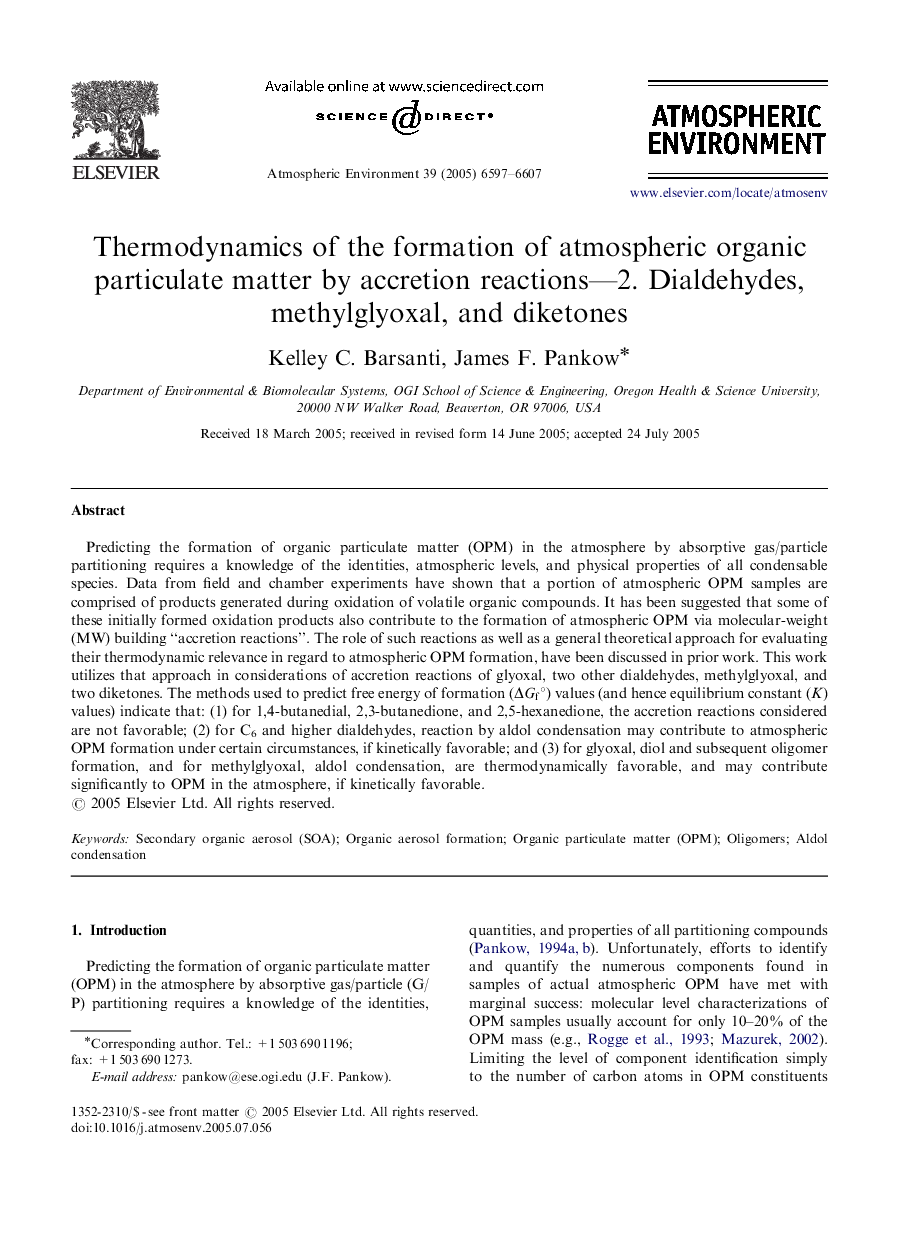| Article ID | Journal | Published Year | Pages | File Type |
|---|---|---|---|---|
| 4445339 | Atmospheric Environment | 2005 | 11 Pages |
Predicting the formation of organic particulate matter (OPM) in the atmosphere by absorptive gas/particle partitioning requires a knowledge of the identities, atmospheric levels, and physical properties of all condensable species. Data from field and chamber experiments have shown that a portion of atmospheric OPM samples are comprised of products generated during oxidation of volatile organic compounds. It has been suggested that some of these initially formed oxidation products also contribute to the formation of atmospheric OPM via molecular-weight (MW) building “accretion reactions”. The role of such reactions as well as a general theoretical approach for evaluating their thermodynamic relevance in regard to atmospheric OPM formation, have been discussed in prior work. This work utilizes that approach in considerations of accretion reactions of glyoxal, two other dialdehydes, methylglyoxal, and two diketones. The methods used to predict free energy of formation (ΔGf°ΔGf°) values (and hence equilibrium constant (KK) values) indicate that: (1) for 1,4-butanedial, 2,3-butanedione, and 2,5-hexanedione, the accretion reactions considered are not favorable; (2) for C6 and higher dialdehydes, reaction by aldol condensation may contribute to atmospheric OPM formation under certain circumstances, if kinetically favorable; and (3) for glyoxal, diol and subsequent oligomer formation, and for methylglyoxal, aldol condensation, are thermodynamically favorable, and may contribute significantly to OPM in the atmosphere, if kinetically favorable.
